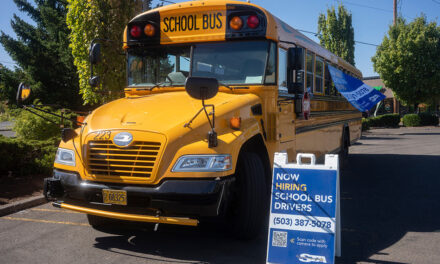Once you’ve built a well-structured sponsorship package, the next step is to set the right price. Pricing is key to attracting businesses while maximizing revenue for your athletic programs. But how does one determine the appropriate value of sponsorship tiers, and what factors should be considered when setting prices? In the second part of our series on sponsorships, we’ll explore strategies for Athletic Directors to price their sponsorship packages effectively.
Where to Start
Pricing sponsorships involves more than just putting a number on exposure—it’s about understanding the value of your audience, your community, and the benefits the sponsor will receive. Here’s a basic step-by-step guide on how to approach pricing:
Audience Size and Reach
The size of your audience is one of the most important factors in pricing your sponsorships. The more people a sponsor can reach through their association with your athletic department, the higher the price they will be willing to pay.
- Game Attendance: Estimate the average number of people who attend your games and events. Include students, parents, alumni, and local community members.
- Digital Presence: Don’t forget your online reach. Many schools now livestream games, host team websites, and engage with fans on social media. These platforms add significant value, especially for sponsors looking to expand beyond in-person attendees.
To price accurately, tally up both in-person and digital engagement for a full picture of your reach.
Value per Audience Member
One way to determine sponsorship pricing is to assign a value per audience member. This represents the price a sponsor is willing to pay for each person exposed to their brand, whether in-person or online.
- Typical Range: The value per person can range from $0.10 to $2 or more, depending on the visibility and engagement opportunities. Here’s one way to determine this range:
- $0.10 – $0.50 per person: For lower-visibility sponsorships (e.g., program ads, website mentions), or when the audience is from low affluent areas.
- $0.50 – $1.00 per person: For middle-class attendees or mid-level sponsorships like banners at games, multiple mentions during announcements, or social media posts.
- $1.00 – $2.00+ per person: For high-visibility placements (e.g., logos on jerseys, naming rights, prominent banners) and sponsorships in more affluent areas.
Example: If you have a total audience of 1,500 people (including attendees and digital viewers) and you estimate the value per person at $1.50, the base value of a sponsorship could be 1,500 × $1.50 = $2,250.
Adjusting Pricing For Exposure and Engagement
Once you’ve determined the base value of a sponsorship, adjust pricing based on the type of exposure and level of engagement the sponsor will receive. Here are some key factors to consider:
Visibility of Sponsorship
Sponsorships that offer higher visibility should be priced higher, as they provide more frequent and prominent exposure to the audience. Here’s how to factor visibility into your pricing:
- High Visibility (e.g., logos on jerseys, field banners): Sponsors will pay more for premium placements that guarantee their brand will be seen frequently and clearly. A 2x to 4x multiplier on the base value is common for these types of sponsorships.
Example: Using the earlier base value of $2,250, a jersey sponsorship could be worth $2,250 × 4 (visibility factor) = $9,000. - Moderate Visibility (e.g., mentions in game announcements, social media posts): For moderate placements, such as PA announcements or smaller banners, use the base value or a 1.5x multiplier.
Example: A banner on the side of the field might be priced at $2,250 × 1.5 (visibility factor) = $3,375. - Low Visibility (e.g., program ads, website mentions): Sponsorships with less exposure, like digital ads or mentions in printed programs, should be priced using the base value or slightly less. You might use a 0.5x to 1x multiplier for these placements.
Example: A logo in the program could be priced at $2,250 × 0.5 (visibility factor) = $1,125.
Engagement Opportunities
The more opportunities sponsors have to directly engage with the audience, the higher the price. Engagement can include:
- In-Person Engagement: If sponsors have the opportunity to set up a booth at events, run contests, or distribute promotional materials, this adds substantial value.
Example: A sponsor who sets up a booth at every game might pay a premium on top of their visibility, with a 1.5x to 2x multiplier. - Digital Engagement: Sponsors that are featured in digital promotions (such as livestream mentions or social media campaigns) are getting additional exposure, which can increase the value of the sponsorship.
Adding digital engagement, such as featuring the sponsor in livestream shoutouts and game-day posts, might boost the overall value up to 2x or more if your digital presence is strong.
Sponsorship Exclusivity
Sponsorships that come with exclusive rights—such as being the sole sponsor in a product category (e.g., “official sports drink”)—should carry a premium. An exclusivity factor of 2x to 5x can be applied to pricing, as businesses are often willing to pay more to avoid competition.
Example: If a company is the exclusive beverage sponsor for your athletic program, you could add a 3x exclusivity multiplier, pricing the sponsorship at $2,250 × 3 = $6,750.
Sponsorship Duration and Frequency
The length of the sponsorship also plays a key role in pricing. One-time sponsorships will be priced lower than season-long or multi-year deals.
Single Event vs. Full Season Sponsorship
- Single Event: A sponsorship for a one-time event should be priced based on the audience size and type of exposure. For example, if 1,000 people are expected to attend a rivalry game, and you estimate the value per person at $2, the sponsorship for that game could be priced at $2,000.
- Full Season Sponsorship: Sponsors that invest for an entire season should pay more, but many athletic directors offer discounts for season-long partnerships. For instance, if each game sponsorship would typically cost $2,000 and your season has 10 home games, the full-season sponsorship could be valued at $20,000. Offering a discount for season sponsorship (e.g., 10-15%) can incentivize businesses to invest long-term.
Multi-Year Deals
Locking in sponsors for multiple years not only provides financial stability for your athletic department but also creates a strong relationship with businesses. Offering a 5-10% discount for multi-year agreements can make your sponsorship package more appealing.
Example: A sponsor paying $10,000 per year for a single season might be willing to commit to a three-year deal at $25,000.
Finalizing and Presenting Your Sponsorship Prices
Once you’ve determined the base value, adjusted for visibility, engagement, exclusivity, and market conditions, you can finalize your sponsorship pricing. Be sure to:
- Offer a Range of Options: Ensure your sponsorship packages appeal to businesses of all sizes. Entry-level options (e.g., $500-$1,000) should be available for smaller local businesses, while premium packages ($10,000+) should target larger corporations.
- Show Clear Value: When presenting your sponsorship packages, include metrics on audience size, engagement opportunities, and examples of how previous sponsors have benefited. Businesses need to understand the return on investment (ROI) they can expect.
- Be Flexible: Some businesses may want customized packages or prefer in-kind contributions instead of cash. Flexibility in your pricing and offerings can lead to long-term partnerships.
Pricing your sponsorship packages correctly is an essential part of building a successful fundraising strategy for your athletic department. By understanding the value of your audience, strategically adjusting for exposure and engagement, and tailoring prices to your local market, you can create lasting sponsorship relationships that benefit both your school and community.










